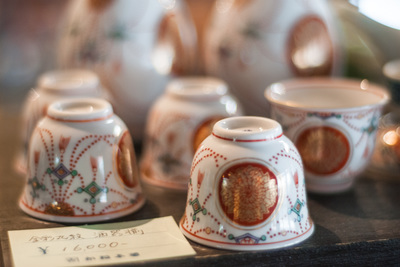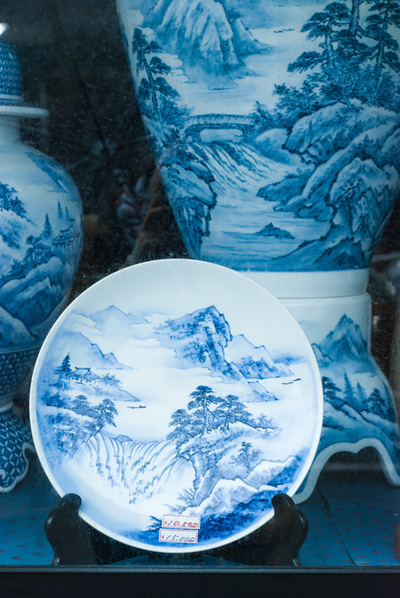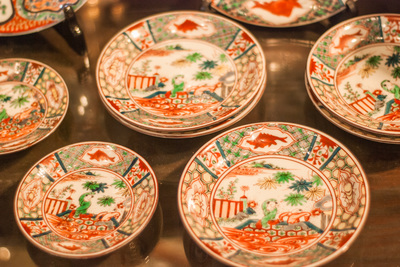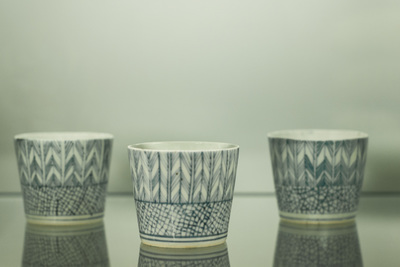| Karatsu and Arita aren’t even 40km away from one another but the pottery style they developed is completely different. Karatsu-yaki is characterized by earthy tones, rough textures or irregular shapes, but Arita-yaki is known for its finely painted porcelain. Porcelain of fine quality was discovered by a Korean potter, Ri Sam Pei, about 400 years ago near Arita and ever since the production has thriven. At the Kyushu ceramics museum, one can see the evolution of Arita ware from the 17th century. At first, the pieces were mostly white with fine blue decorations until Sakaida Kakiemon introduced other vivid colours. This is considered to be the beginning of Japanese style Arita ware. As Arita ware was favored by Europeans during the 17th and 18th century, the potters started adapting their style. Influenced by the European style and due to the important trade with the Dutch company, new glazes and decorations were introduced. In Arita city, dozens of galleries are lined up along the main street. One can find all kinds of Arita-yaki there: the original Sometsuke style (blue underglaze on porcelain) but also the richer and more elaborate Iroe as well as Celadon ware . | |
Visiting the Kyushu Ceramics Museum is really interesting as we can see how little has changed in the past 4 centuries. The pieces on sale in galleries today are not very different from what was made in the 17th century. At that time already, the pieces were thin, white and with delicate patterns with impressive regularity.
The Kyushu Ceramics Museum has also a very interesting timeline of the history of ceramics in Saga prefecture compared to pottery in China at the same time. The similarities in shape and styles are striking, with only a few years of difference between Japanese style and Chinese style.
For me, the most interesting section was the technical gallery with samples of clay raw, bisqued, glazed and fired to explain each decoration technique.
Aside galleries, it is possible to visit factories and see some of the traditional kilns in Arita. One of them is the Gen-Emon kiln. I didn't get a chance to visit it but it might be worth a detour if you're interested in the process of making ceramics.
The Kyushu Ceramics Museum has also a very interesting timeline of the history of ceramics in Saga prefecture compared to pottery in China at the same time. The similarities in shape and styles are striking, with only a few years of difference between Japanese style and Chinese style.
For me, the most interesting section was the technical gallery with samples of clay raw, bisqued, glazed and fired to explain each decoration technique.
Aside galleries, it is possible to visit factories and see some of the traditional kilns in Arita. One of them is the Gen-Emon kiln. I didn't get a chance to visit it but it might be worth a detour if you're interested in the process of making ceramics.




